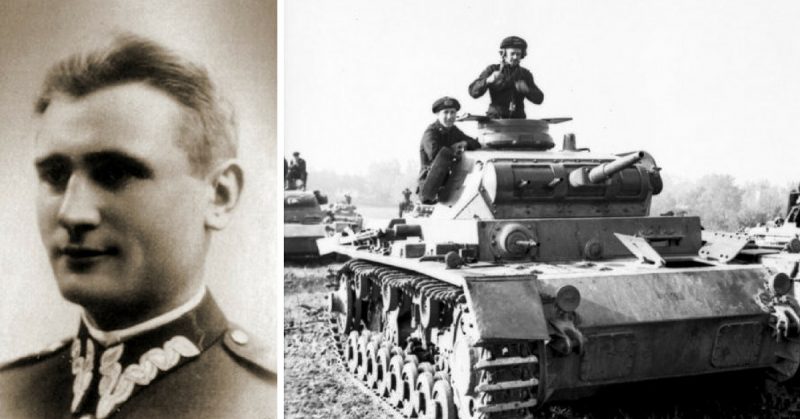As German troops poured across the border into Poland in 1939, one Polish captain, 40 miles from the front line, prepared for what he knew would be a desperate last stand. Władysław Raginis, commander of the Polish forces in Wizna began to set the stage for what would become known as the Polish Thermopylae.
Raginis, the son of a landowning family, served with the Border Protection Corps of the Polish Army. They were in charge of securing border regions against all possible invaders. The unit trained in a combination of Police, Military, and Border Patrol tactics, and by the time Raginis joined in early 1939; it was an elite force. At the end of the summer that year, Raginis was moved to the area around Osowiec Fortress, near the border with East Prussia. There he took command of all troops in Wizna.
At the outbreak of hostilities, he had about 800 men, two anti-tank rifles, and six 76mm anti-tank guns. One thing he knew he could rely on were his 42 machine guns. Wizna had been built up as a small fortress but the war started before construction of the bunker system could be completed. Raginis hoped the existing defenses would provide his men with a strong enough network to hold out, possibly for a few days. None of them knew what was approaching them.
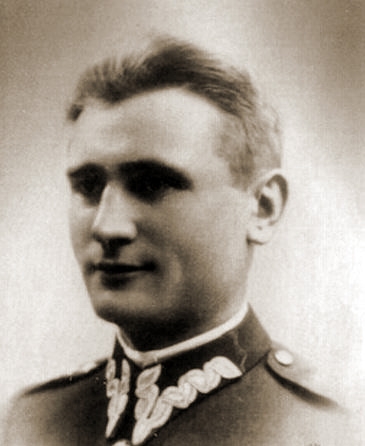
Across the border, the German XIX Corps, comprised of armored and motorized divisions under the command of General Heinz Guderian, started their engines and began pushing east. Guderian had over 40,000 troops under his command, including 350 tanks, and 657 mortars and artillery pieces. He was leading an armored fist to encircle the Polish defenses and cut them off from the eastern half of the country. After six days of fighting, and covering around 200 miles, his men arrived at the Narew river, and the town of Wizna.
Early on the morning of September 7, Polish cavalry in Wizna heard a distant rumble. Scanning the horizon, they saw their worst nightmare; German armor rolling through the groves of trees and farms and approaching the town. The cavalry, a reconnaissance contingent armed with carbines, knew they could not fight against an armored force. They rushed back across the River, alerting the main force that the war had finally reached them.
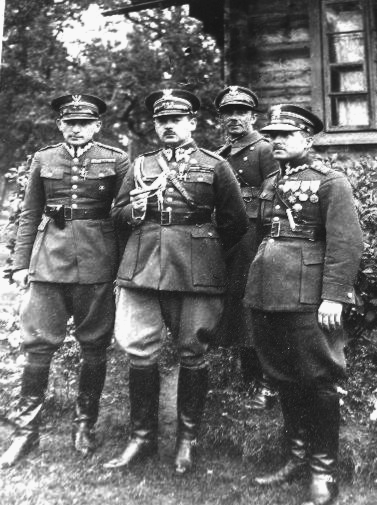
The armored vehicles quickly took the town, but as the tanks approached the River, Polish engineers blew the only bridge in the area, effectively halting the advance. They had bought themselves time, but how much?
As night fell, the two sides settled into an uneasy stalemate. German aerial reconnaissance showed there was a series of trenches and bunkers stretching from Wizna back to Krupiki, 4 miles away. They had no indication of the number of Polish troops in the area. The Polish could see they were heavily outnumbered, but that was about it.
Under cover of darkness, German infantry attempted to cross the river, searching for a weak spot in the Polish defenses. As they neared the first bunkers, the night lit up around them. Machine gun tracers flashed through the air. Sustaining heavy casualties, the German infantry retreated. Raginis’ troops had drawn first blood, but the battle was far from over.
Next day the Poles were awoken by the steady drone of aircraft overhead. German bombers filled the sky but dropped only pieces of paper. Leaflets littered the area, declaring that the Polish defenders were hopelessly outnumbered, and should surrender immediately to save lives. Captain Raginis, and his second in command, Lieutenant Brykalksi, announced to their troops, they would not leave their post alive! Every inch of Polish territory would have to be paid for in German blood.
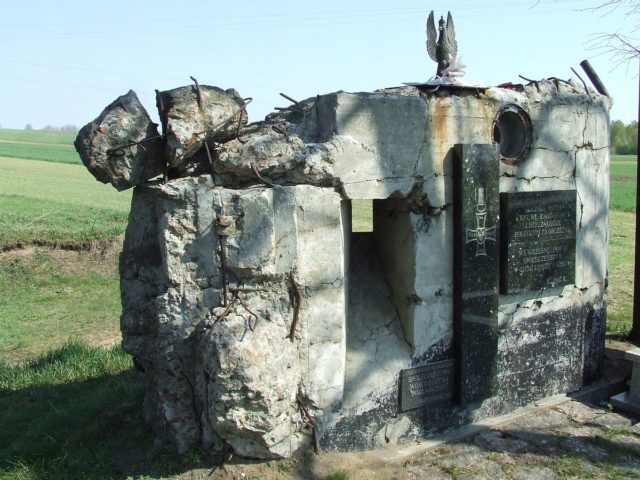
In the afternoon, the terrifying drone of aircraft was again heard, dropping bombs on the forward positions. The Poles took refuge in their bunkers, as German howitzers and mortars joined the barrage. Guderian’s troops attacked the two isolated bunkers north of the Narew, encircling them on three sides with tanks and infantry. At first, the Polish rifles and machine guns held the German infantry at bay, but the German artillery opened up again. After a heavy bombardment, the two platoons of Polish infantry were forced to retreat.
The Poles only line of defense in the north was the thin Narew river, and in the south, German troops poured across a field towards the defensive line. German infantry became bogged down in a swampy area, making slow progress over open ground. Polish riflemen and machine gunners raked their advancing foe with devastating fire, but German armor supported the infantry. The Poles were forced out of their trenches, and into the heavy bunkers, incurring casualties as they fled.
By the end of the day, German tanks were able to pass the Polish defensive line, but the infantry could not get close to the bunkers. Raginis and his men learned there was no chance of reinforcements; they were on their own against an onslaught of German troops.
Fighting continued overnight as the Germans tried to capture the outlying bunkers. Again, Polish rifle and machine-gun fire held them off, both sides sustaining heavy casualties. The tanks and artillery rejoined the fight, destroying each bunker one by one, forcing the Poles to retreat further. By the morning of September 10, two bunkers remained in Polish hands. A German soldier approached, carrying a white flag. He requested a ceasefire, to bury the dead and discuss terms.
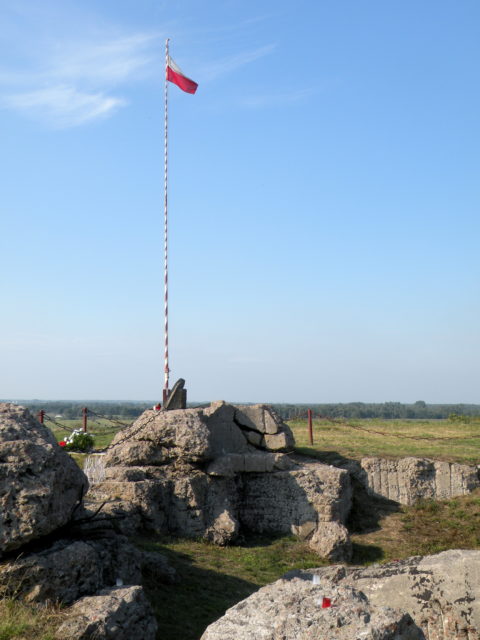
Raginis was faced with a terrible decision: fight on, and delay the Germans further, or surrender and hopefully save his men. He chose the latter. Looking around his bunker, at the wounded, but determined and loyal troops, he knew he could not throw their lives away for what would likely be only another hour or so of fighting. They had little ammunition left, and would simply be pummeled by artillery if they refused.
Ordering his troops to surrender, the bloodied, and beaten Poles filed out, towards the German lines. True to his word, Raginis did not leave the bunker alive. He had been severely wounded, possibly mortally, but instead of being taken captive, he threw himself on a grenade, after ensuring all his men were safe.
Want War History Online‘s content sent directly to your inbox? Sign up for our newsletter here!
The battle of Wizna, a rear action meant to delay the German advance, became a cultural touchstone. Outnumbered by over 50 to 1, Polish troops held out for an incredible three days against some of the best forces Germany had to offer. While the battle’s significance may be overlooked, the bravery of the men who fought to defend their homeland must never be forgotten.
